Bean to Bar
Bean to Bar
Chocolate, a favorite treat for millions of people around the world. Takes a fascinating journey from the humble cocoa bean to the delicious bar.
The process of making chocolate involves several complicated steps, each of which contributes to the creation of the rich taste, smooth texture and irresistible aroma. Immerse yourself with us in the fascinating world of chocolate production and uncover the secrets that lie behind this delicious treat.
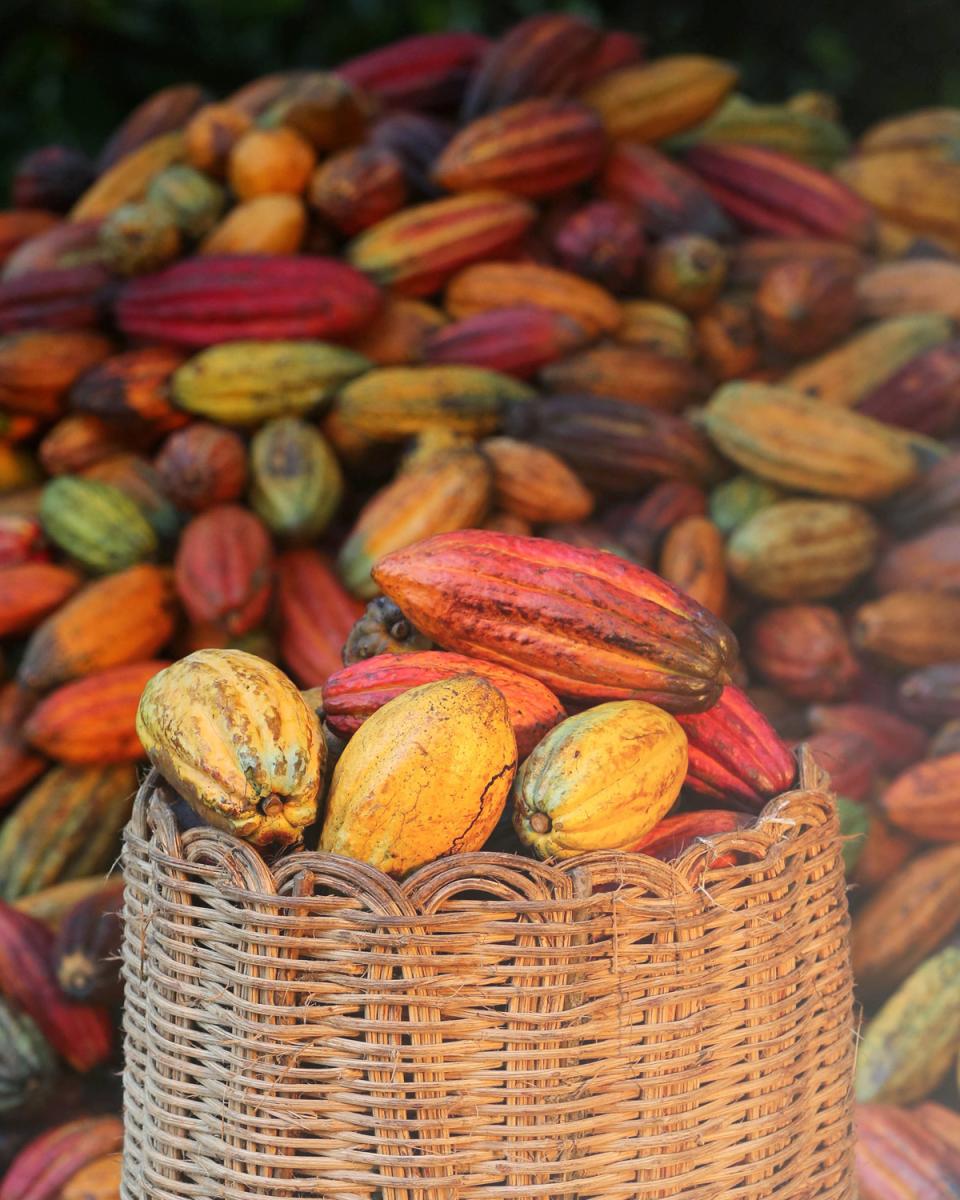

Cultivation and harvest
The journey of chocolate begins in tropical regions where cocoa trees thrive. The beans, surrounded by their natural pulp, undergo a controlled fermentation process. This step is crucial as it allows the flavors to develop while reducing bitterness. Fermentation can take several days, during which the beans are regularly turned and monitored for optimal results.
Fermentation
In order to develop the unique flavors of the chocolate, the harvested cocoa beans are removed from the pods and placed in large fermentation containers. The beans, surrounded by their natural pulp, undergo a controlled fermentation process. This step is crucial as it allows the flavors to develop while reducing bitterness. Fermentation can take several days, during which the beans are regularly turned and monitored for optimal results.
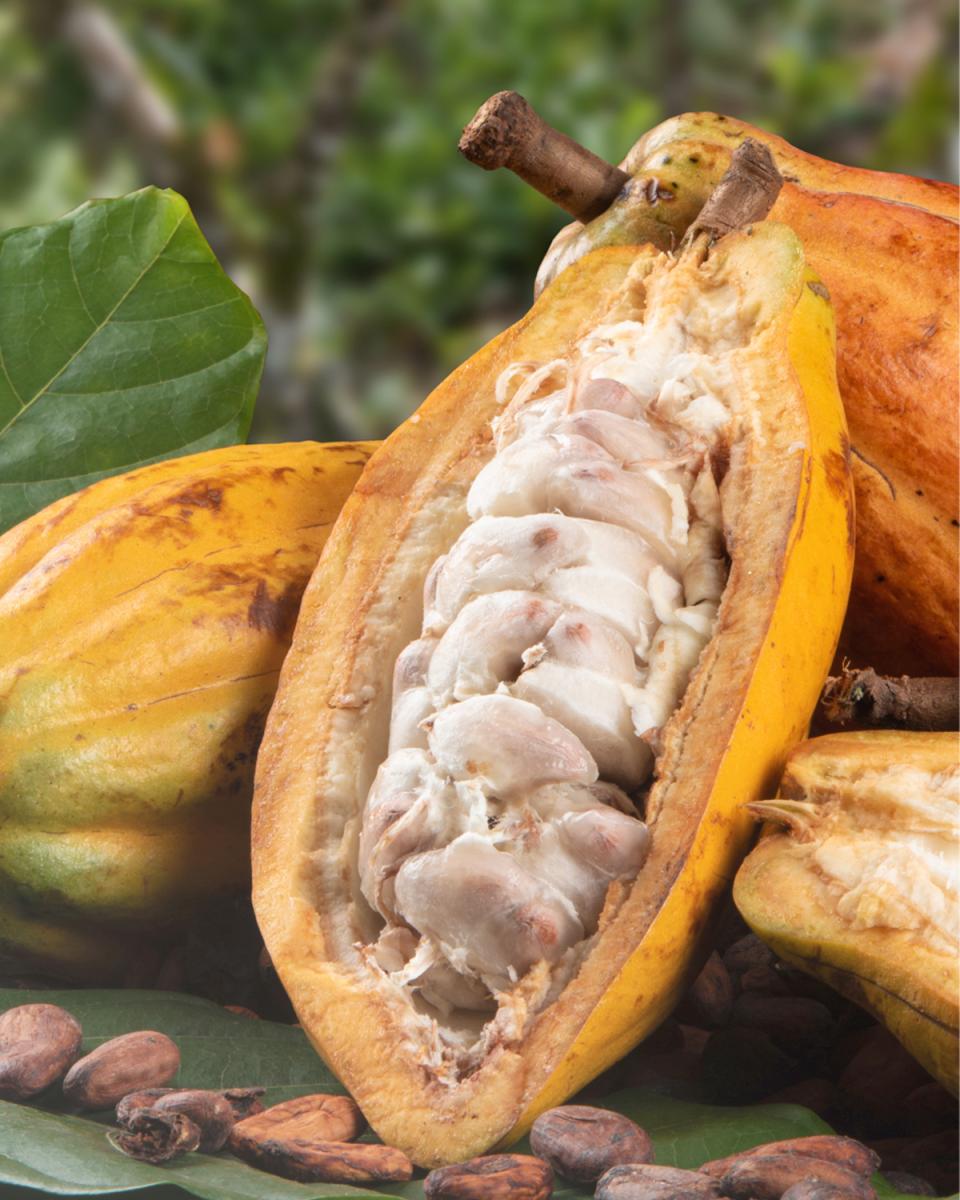

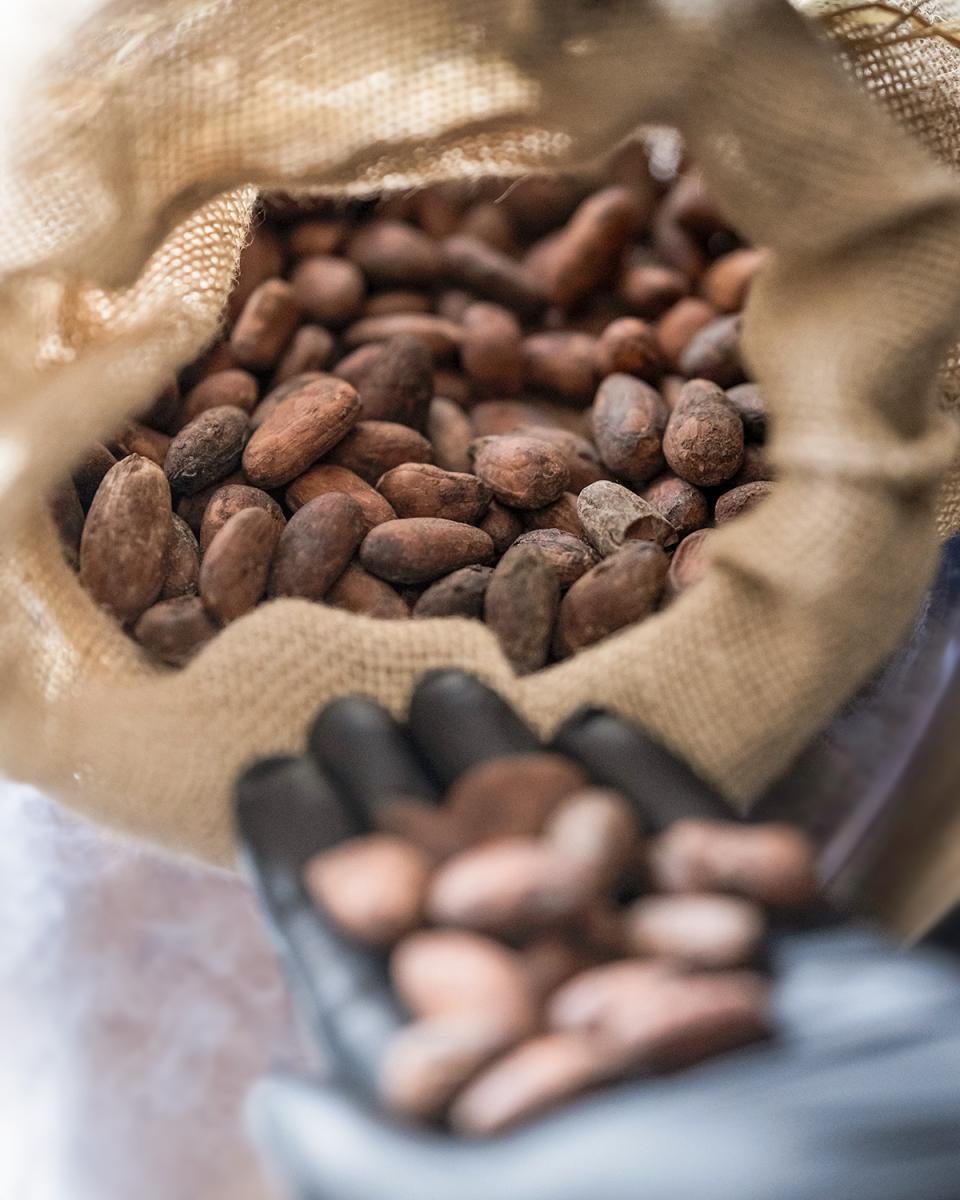

Drying
After fermentation, the beans are spread out in a single layer to dry. This can be done either under the sun or with special drying equipment. So that the beans can be stored without spoiling. It also contributes to the development of a specific flavor profile. To maintain the quality and properties of the beans, appropriate drying methods are essential.
The roasting
After drying, the cocoa beans are ready for roasting, a process that brings out their rich aroma and deepens the flavor notes. Depending on the desired result, but in general the beans are gently heated until they reach their optimal flavor potential. Roasting also removes any residual moisture and makes the outer shell easier to remove.
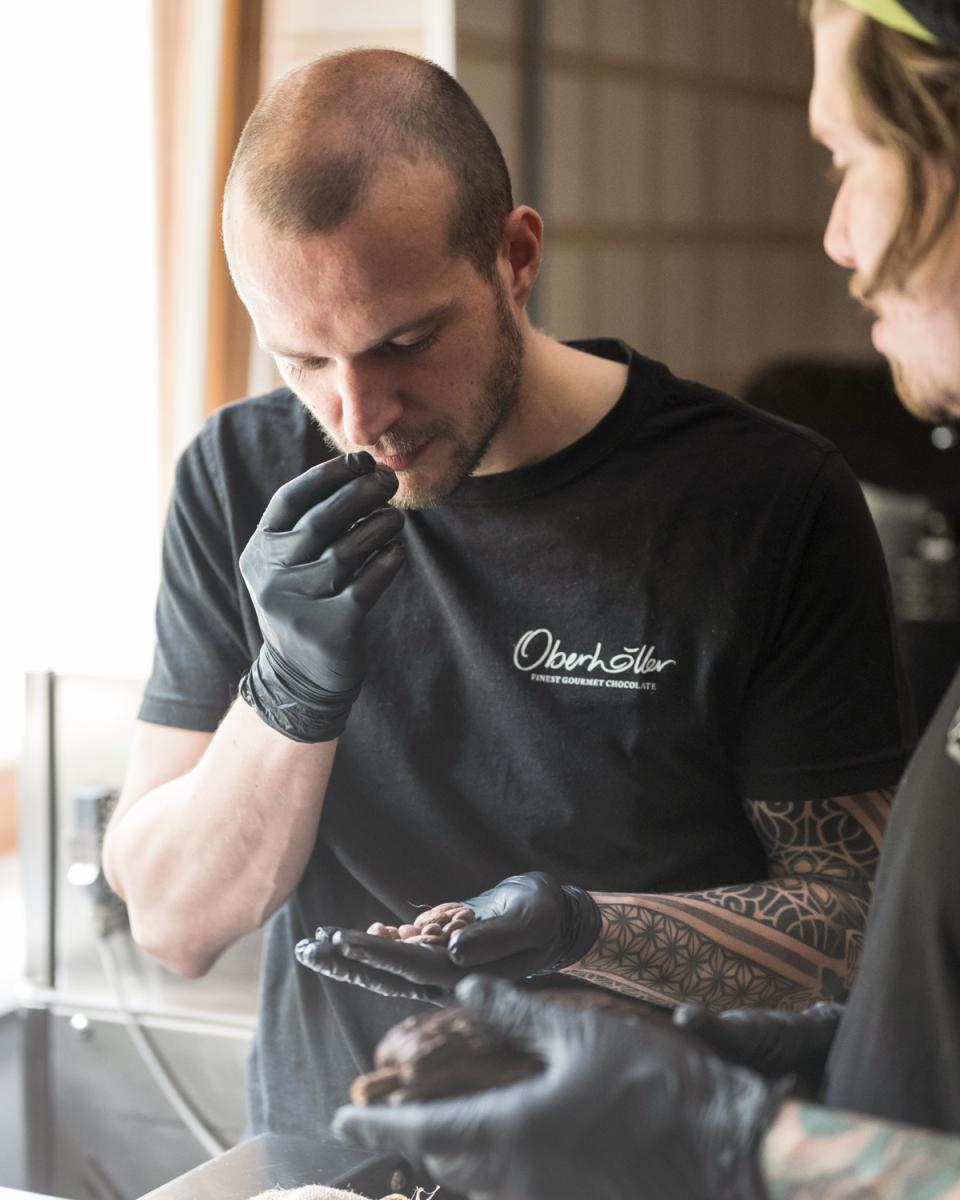

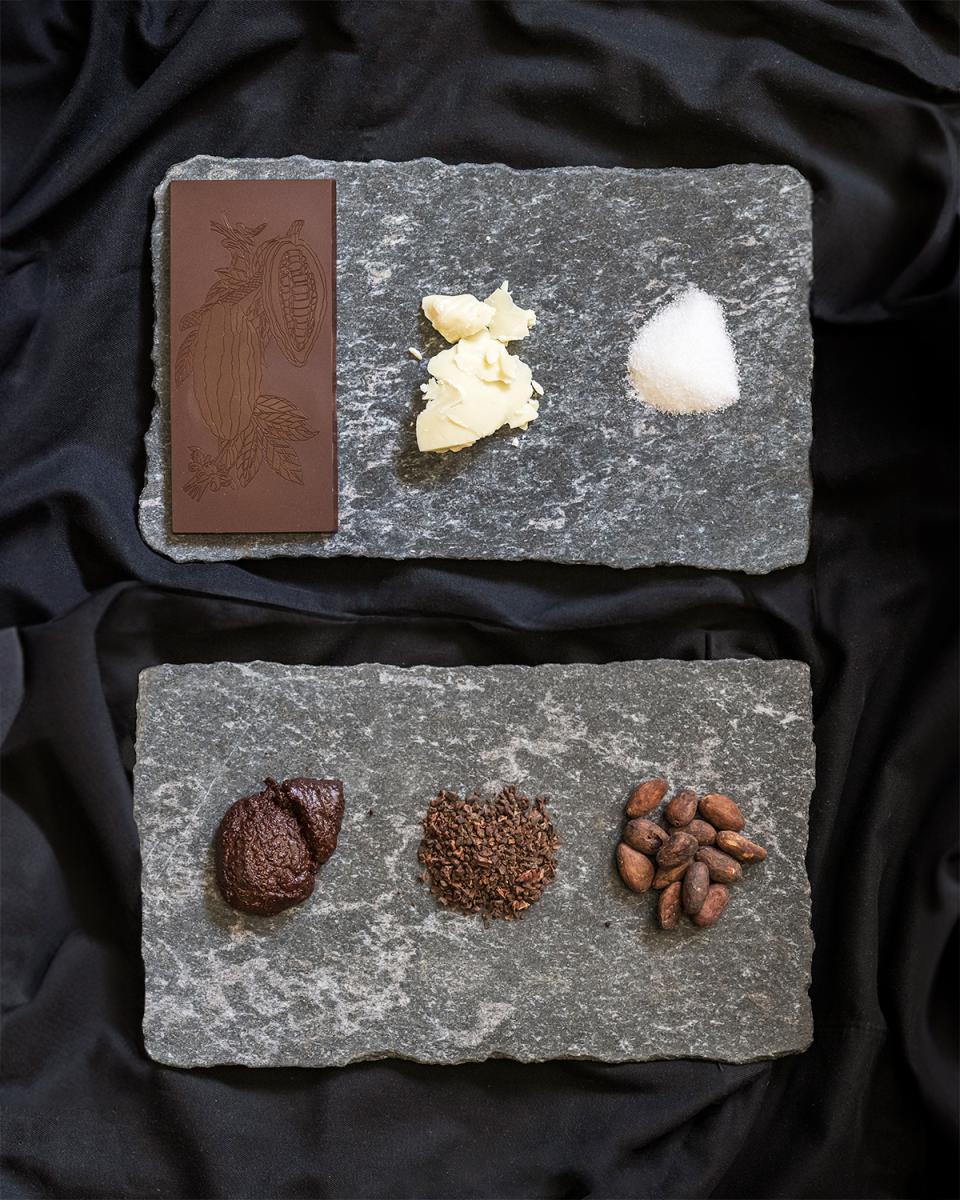

Grinding and conching
Roasted cocoa beans are ground into a fine paste called chocolate mass. This mass consists of cocoa solids and cocoa butter, the natural fat of the beans. In order to refine the taste and achieve a smooth consistency, the chocolate mass is then subjected to a process called conching. Conching involves constantly stirring and heating the chocolate to achieve the desired smoothness and reduce any remaining bitterness.
Tempering
Tempering is a crucial step that gives chocolate its characteristic shine, bite and stable structure. During this process, the chocolate is heated and cooled in a precise manner to promote the formation of stable cocoa butter crystals. Tempering ensures the right texture of the chocolate and prevents unsightly gray streaks or a soft, grainy appearance when the chocolate solidifies.
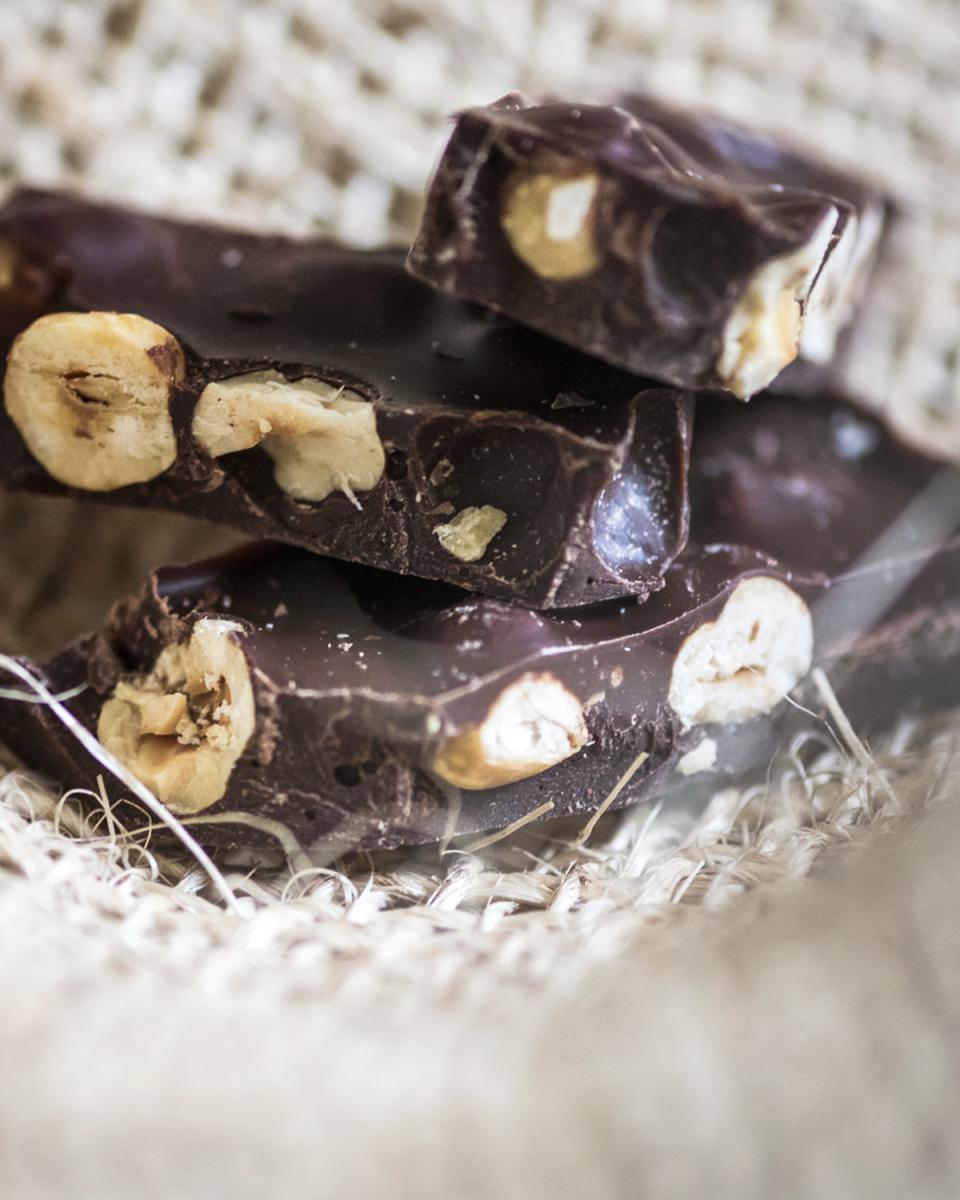

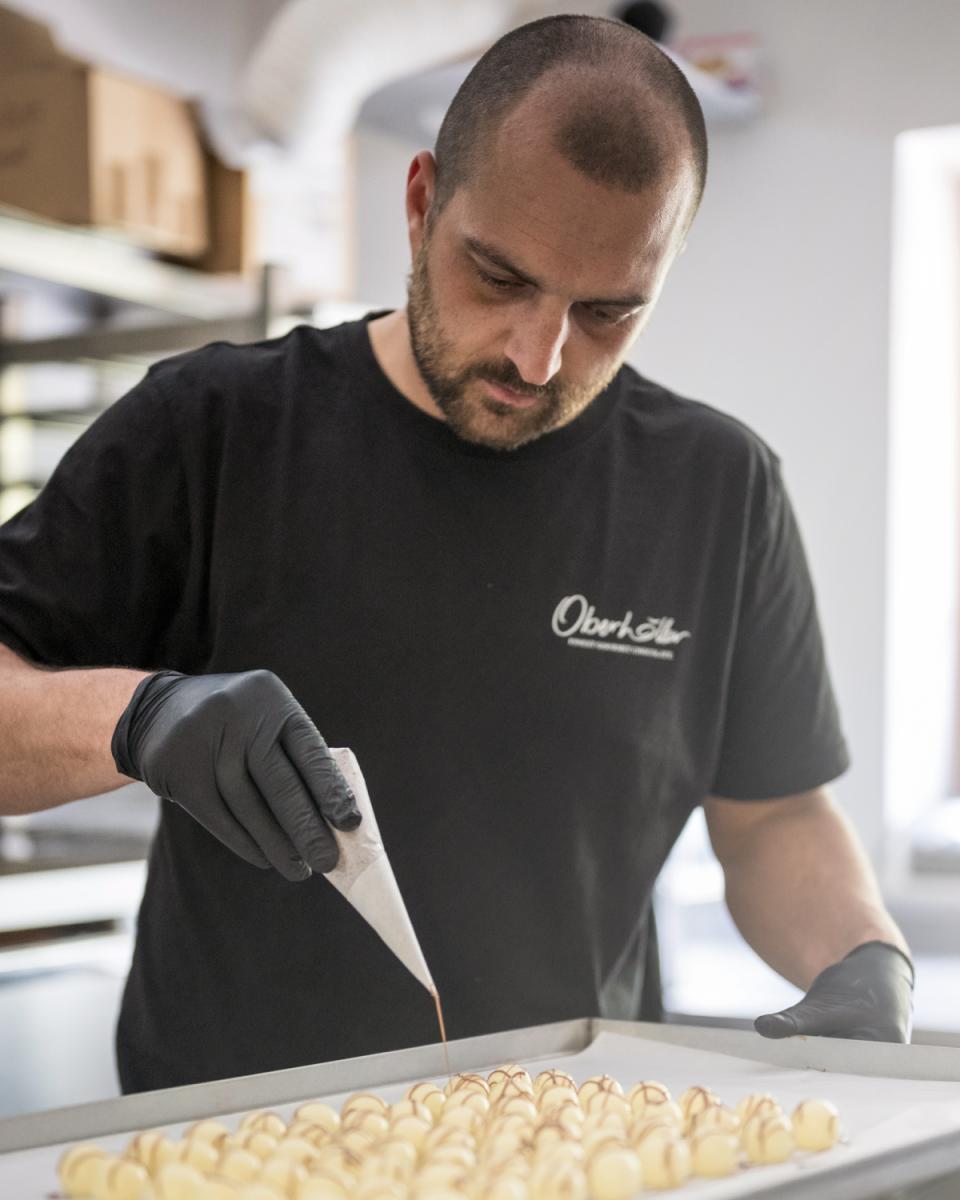

Pouring and packaging
The tempered chocolate is poured into molds where it takes on different shapes and sizes. During this process, the chocolate is heated and cooled in a precise manner to promote the formation of stable cocoa butter crystals. After pouring, the chocolate is allowed to cool and solidify so that it takes on the familiar, irresistible shape we know and love. Finally, the bars are carefully packaged and ready to be enjoyed by chocolate lovers around the world.
The journey from cocoa bean to chocolate bar is a testament to the artistry and precision of chocolate making. Every step, from cultivation to shaping, helps create a delicious treat that millions of people enjoy. So next time you enjoy a piece of chocolate, take a moment to appreciate the craftsmanship and dedication that goes into every bite and let the flavors transport you to the magical world of chocolate making.
Range
An irresistible selection of chocolate creations
From fine pralines with creamy fillings to crunchy chocolate bars with unique flavor combinations - at Oberhöller Chocolate you will find the right piece of chocolate for every occasion and every taste.




